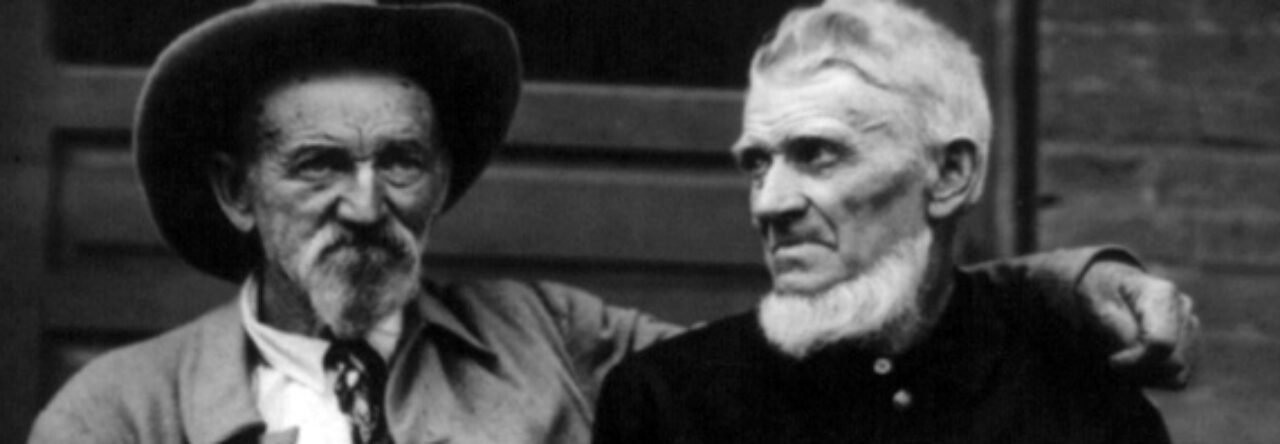Life & Family
Abraham Lincoln was a southerner who led the North during the Civil War. Born on February 12, 1809, the same day as scientist Charles Darwin, Lincoln began his life on a farm in Kentucky before moving as a young child to Indiana and eventually to Illinois. He settled in Springfield, married Mary Todd, and raised four boys (two of whom died before he did). Lincoln was six-feet, four inches tall and weighed about 180 pounds. He was well respected as a politician and attorney and well-liked for his story-telling abilities. Lincoln served one term in Congress where he gained notice for opposing the Mexican War but otherwise had no experience in Washington before becoming president. During the 1850s, Lincoln helped organize the Republican Party in Illinois and distinguished himself as an anti-slavery orator, especially during the famous Lincoln-Douglas Debates of 1858. Two years later, Lincoln and Stephen Douglas faced each other again, this time as part of the dramatic four-way presidential contest of 1860. Lincoln won an electoral majority and seven Deep South states seceded. President Lincoln refused to bend and war erupted at Fort Sumter in April 1861. As a wartime leader, Lincoln has been widely revered for his actions to save the nation, free the slaves and for his astounding ability to communicate the values of democratic self-government in simple, elegant phrases. He won reelection in 1864 but was shot and killed by actor John Wilkes Booth in mid-April 1865, just over one month into his second term.
In December 1859 Lincoln wrote a short autobiographical sketch and sent it to Jesse W. Fell. You can listen to this letter through the audio player below:
Sources
Important primary sources include the Abraham Lincoln Papers at the Library of Congress, the Collected Works of Abraham Lincoln at the University of Michigan, and the Papers of Abraham Lincoln. Key secondary sources on the Lincoln Douglas Debates include David Zarefsky’s Lincoln, Douglas, and Slavery: In the Crucible of Public Debate (1990) and Allen C. Guelzo’s Lincoln and Douglas: The Debates That Defined America (2008). Other important sources on Lincoln include David Herbert Donald’s Lincoln (1996) and Michael Burlingame’s Abraham Lincoln: A Life (2008).
Places to Visit
Springfield, Illinois has a number of historic sites on Lincoln, such as the National Park Service’s Lincoln home, the Lincoln-Herndon Law Offices, the Lincoln Tomb, and the Lincoln Depot. You can also see the Old State House where Lincoln gave his famous House Divided speech in 1858. The Abraham Lincoln Presidential Library & Museum is also located in Springfield. If you are in Washington DC, you can visit Ford’s Theatre and the Lincoln Memorial. While in Gettysburg you can tour the David Wills’ house and see the bedroom where Lincoln stayed the night before he delivered the Gettysburg Address in November 1863. In addition, the Abraham Lincoln Birthplace National Historical Park is located in Hodgenville, Kentucky.
Artifacts
The Alfred Whital Stern Collection of Lincolniana at the Library of Congress has a number of items, including Lincoln’s life mask from February 1865 and the contents of Lincoln’s pockets on the evening of his assassinations. In addition, this collection contains material related to Lincoln’s opponent in 1858, such as Stephen Douglas’ life mask from 1857. The Library of Congress also has the bible that Lincoln used during his inauguration on March 4, 1861. President Barack Obama used the same bible in January 2009 when he took the oath of office. The Smithsonian’s National Museum of American History also has a number of items, such as Lincoln’s Top Hat and a model of his patent (“Improvement for Buoying Vessels Over Shoals“). In addition, the Lincoln Collection at the Abraham Lincoln Presidential Library & Museum contains over 250 artifacts, including Lincoln’s beaver-fur stovepipe hat, Tad Lincoln’s toy cannon, the skirt to Mary Lincoln’s wedding dress, and Mary’s blood-stained fan from Ford’s Theatre.
Images


Leave a Reply